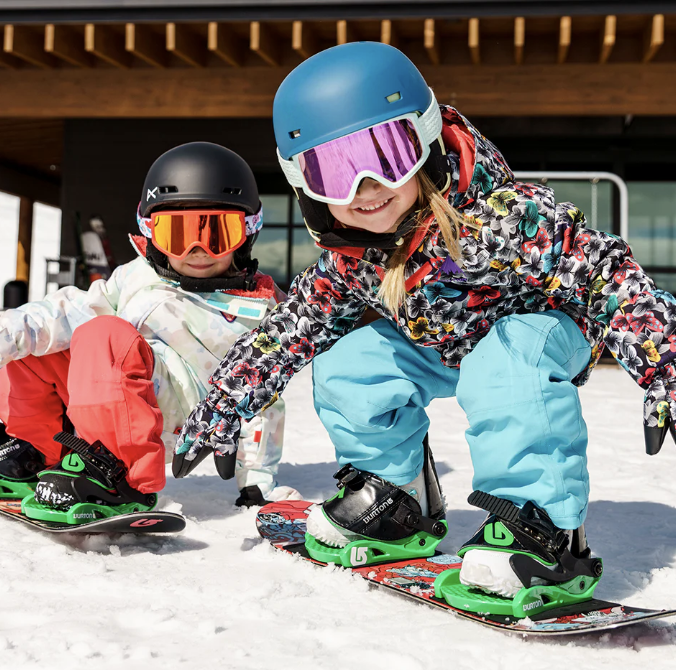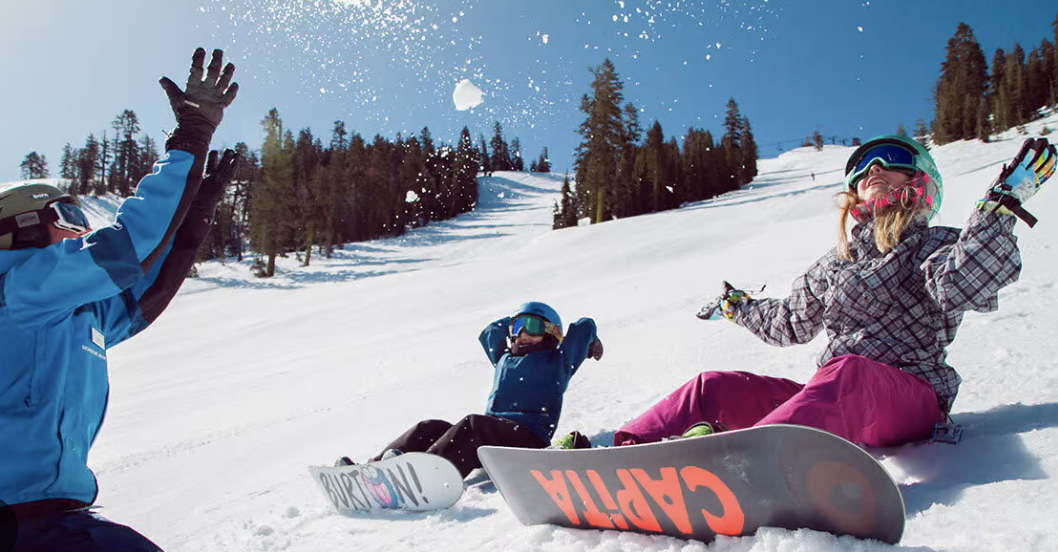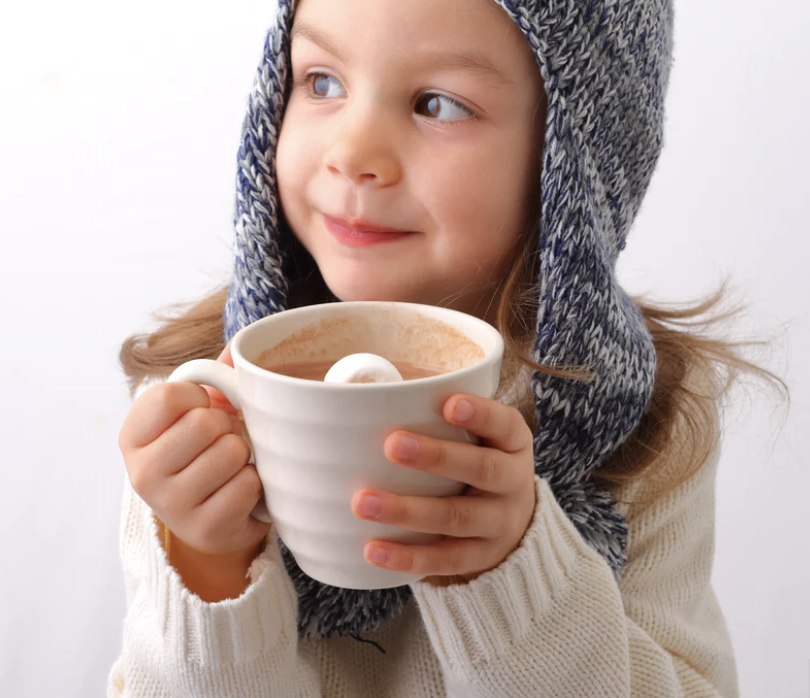First-Time Snowboarding: Essential Gear for Kids
Introducing a child to snowboarding for the first time should focus on safety, comfort, and fun. The right gear will help ensure a positive first experience on the slopes, keeping them warm, protected, and excited to learn!

Essential Snowboarding Gear for Kids
Snowboard
Size matters! Choose a child-appropriate snowboard sized correctly for their height and weight.
Shorter, softer boards are easier for beginners to maneuver and control.
Look for boards with a twin-tip shape (symmetrical) for easy learning.
If renting, consult snowboard shop staff for the best fit.
Shorter, softer boards are easier for beginners to maneuver and control.
Look for boards with a twin-tip shape (symmetrical) for easy learning.
If renting, consult snowboard shop staff for the best fit.
Snowboard Bindings
Bindings must be compatible with the snowboard, and the boots must be securely attached.
Adjustable bindings accommodate growth and different boot sizes.
Easy-entry bindings (like BOA or step-on) can help kids get in and out faster.
Adjustable bindings accommodate growth and different boot sizes.
Easy-entry bindings (like BOA or step-on) can help kids get in and out faster.
Snowboard Boots
Comfort is key! Boots should be warm, waterproof, and provide excellent ankle support.
Fit should be snug but not tight—toes should have slight wiggle room.
Look for BOA lacing systems or hook-and-loop closures for easy tightening.
Fit should be snug but not tight—toes should have slight wiggle room.
Look for BOA lacing systems or hook-and-loop closures for easy tightening.
Snowboard Helmet
A properly fitted, snow-certified helmet is non-negotiable for safety.
Make sure it is adjustable for a snug fit but not too tight.
Some helmets come with built-in insulation, eliminating the need for a separate hat.
Make sure it is adjustable for a snug fit but not too tight.
Some helmets come with built-in insulation, eliminating the need for a separate hat.
Snow Goggles
Protect eyes from wind, snow, and UV rays.
Look for anti-fog, UV-protected goggles with good ventilation for clear vision.
Ensure a snug fit over the helmet—goggles should not slip down.
Look for anti-fog, UV-protected goggles with good ventilation for clear vision.
Ensure a snug fit over the helmet—goggles should not slip down.

Snowboard Jacket & Pants
Waterproof, windproof, insulated, and breathable outer layers are essential.
Jackets with snow skirts and wrist gaiters help keep snow out.
Bib-style snow pants are great for younger kids—more warmth, less snow sneaking in.
Bright colors improve visibility—it’s easier to spot kids on the slopes.
Jackets with snow skirts and wrist gaiters help keep snow out.
Bib-style snow pants are great for younger kids—more warmth, less snow sneaking in.
Bright colors improve visibility—it’s easier to spot kids on the slopes.
Base Layers (Thermals)
Moisture-wicking materials (like merino wool or synthetic fibers) keep kids dry.
Avoid cotton—it absorbs moisture and can make kids cold.
Layering is crucial for temperature control throughout the day.
Avoid cotton—it absorbs moisture and can make kids cold.
Layering is crucial for temperature control throughout the day.
Snowboard Socks
Choose warm, moisture-wicking socks (merino wool or synthetic).
Avoid multiple sock layers—it can reduce circulation and cause discomfort.
Socks should fit snugly to prevent bunching inside boots.
Avoid multiple sock layers—it can reduce circulation and cause discomfort.
Socks should fit snugly to prevent bunching inside boots.
Gloves or Mittens
Insulated, waterproof gloves or mittens keep hands warm and dry.
Mittens are often warmer than gloves for younger kids.
Look for long cuffs that fit over jacket sleeves to keep out snow.
Mittens are often warmer than gloves for younger kids.
Look for long cuffs that fit over jacket sleeves to keep out snow.
Wrist Guards (Highly Recommended!)
Snowboarding beginners often fall forward, making wrist injuries common.
Wrist guards help absorb impact and reduce injury risk.
They can be worn under gloves or mittens for added comfort.
Wrist guards help absorb impact and reduce injury risk.
They can be worn under gloves or mittens for added comfort.
Protective Padding (Optional but Useful)
Knee pads, elbow pads, and padded shorts can soften falls.
Padded shorts help protect the tailbone—a common area for beginner falls.
Some kids’ snowboard pants come with built-in padding for extra protection.
Padded shorts help protect the tailbone—a common area for beginner falls.
Some kids’ snowboard pants come with built-in padding for extra protection.
Small Backpack (Optional)
A lightweight pack can carry:
Snacks (granola bars, trail mix, fruit pouches)
Water bottle or hydration pack.
Extra gloves or mittens.
Walkie-talkie for communication on the mountain.
Sunscreen & Lip Balm
Snow reflects UV rays, increasing sun exposure—even on cloudy days.
Use a high-SPF, broad-spectrum sunscreen on the face and neck.
SPF lip balm prevents chapped lips in dry, cold conditions.
Use a high-SPF, broad-spectrum sunscreen on the face and neck.
SPF lip balm prevents chapped lips in dry, cold conditions.
Lessons & Supervision: The Key to Success
Take a Lesson with a Certified Instructor
Even if you’re experienced, professional snowboard instructors teach using kid-friendly methods.
Group lessons allow kids to learn with peers, making it more fun and social.
One-on-one lessons can be great for kids who need extra attention.
Group lessons allow kids to learn with peers, making it more fun and social.
One-on-one lessons can be great for kids who need extra attention.

Adult Supervision on the Slopes
Always keep an eye on your child and ensure they know a meeting point in case they get separated.
Consider a GPS tracker or an app like Ski Tracks for peace of mind.
Teach kids basic snowboard etiquette, like waiting their turn and watching for others.
Consider a GPS tracker or an app like Ski Tracks for peace of mind.
Teach kids basic snowboard etiquette, like waiting their turn and watching for others.
Pro Tips for a Successful First Snowboard Season
Keep Expectations Realistic – The first few days involve lots of falling—praise effort, not just success!
Choose Beginner-Friendly Resorts – Look for places with magic carpets, bunny slopes, and patient instructors.
Take Breaks Often – A tired, cold, or hungry child won’t have fun. Plan for warm-up breaks and hot cocoa stops.
Dress in Layers – Kids warm up while riding but cool down quickly on lifts—layering is key.
Use a Snowboard Leash (if required) – Some resorts require a leash for young beginners to prevent runaway boards.
Celebrate Small Wins – A sticker, hot chocolate, or high-five can make a difference in confidence!
Choose Beginner-Friendly Resorts – Look for places with magic carpets, bunny slopes, and patient instructors.
Take Breaks Often – A tired, cold, or hungry child won’t have fun. Plan for warm-up breaks and hot cocoa stops.
Dress in Layers – Kids warm up while riding but cool down quickly on lifts—layering is key.
Use a Snowboard Leash (if required) – Some resorts require a leash for young beginners to prevent runaway boards.
Celebrate Small Wins – A sticker, hot chocolate, or high-five can make a difference in confidence!

Buy vs. Rent: What’s Best for First-Timers?
If your child is trying snowboarding for the first time, renting equipment is more cost-effective. However, if they plan to ride multiple times a season, it may be worth investing in their own gear.
Rent Snowboard, Boots & Bindings – Kids grow fast, and rentals allow you to adjust sizes each year.
Buy a Helmet & Goggles – These are personal items worth owning for a proper fit and hygiene.
Consider Seasonal Rentals – Many snowboard shops offer affordable season-long rentals that save money over multiple trips.
Buy a Helmet & Goggles – These are personal items worth owning for a proper fit and hygiene.
Consider Seasonal Rentals – Many snowboard shops offer affordable season-long rentals that save money over multiple trips.
Make Snowboarding Fun!
The first-time snowboarding should be about FUN. With the right gear, a positive attitude, and plenty of hot cocoa breaks, your child will love the experience and be eager to ride again.
